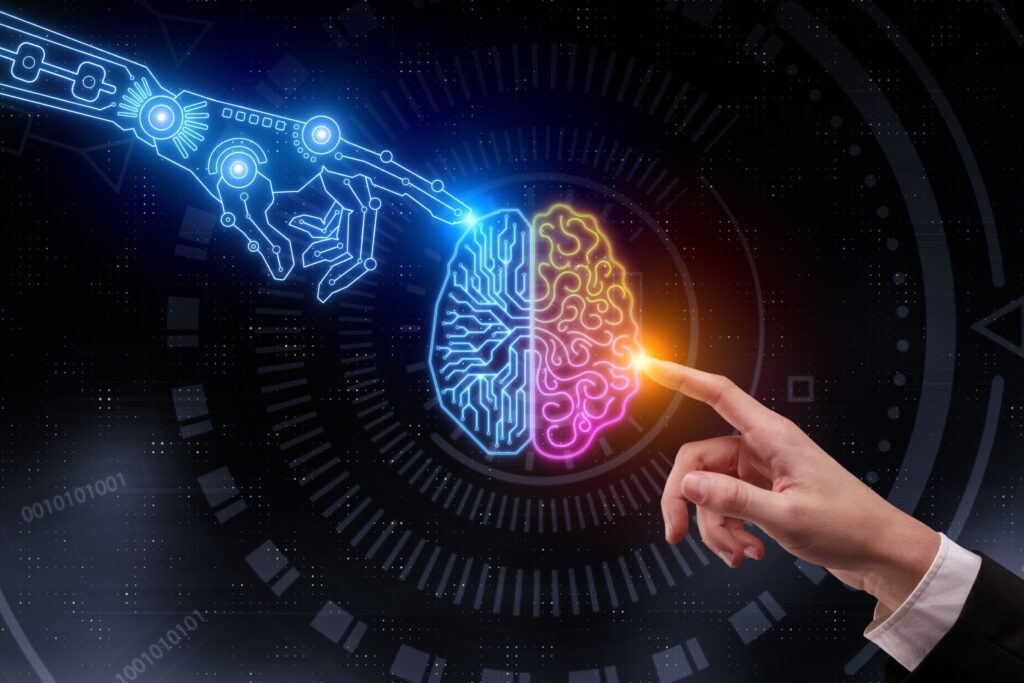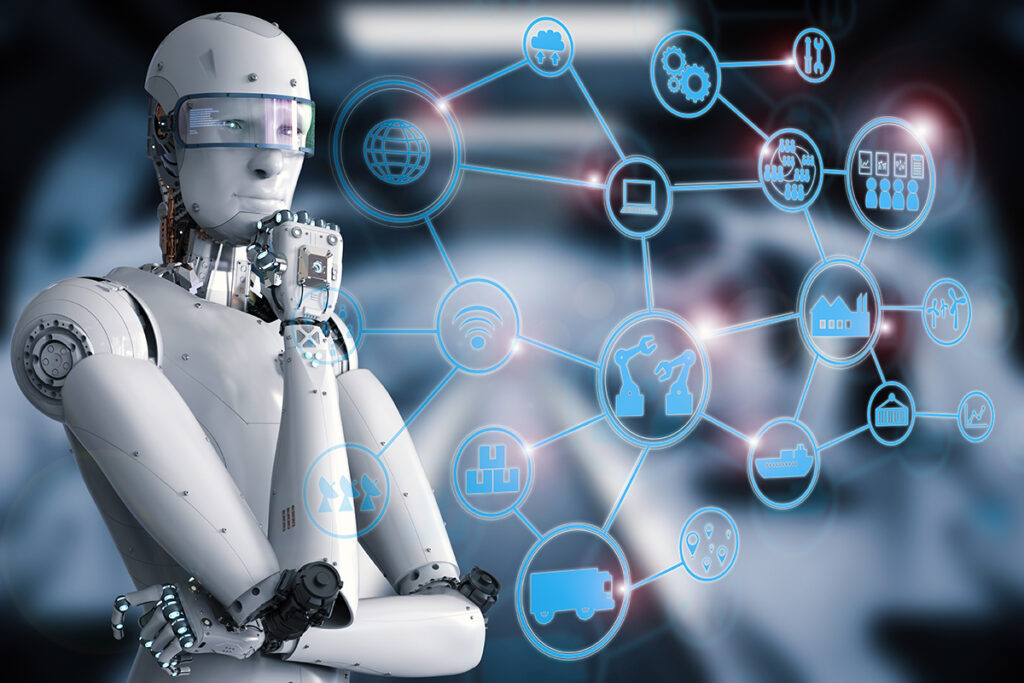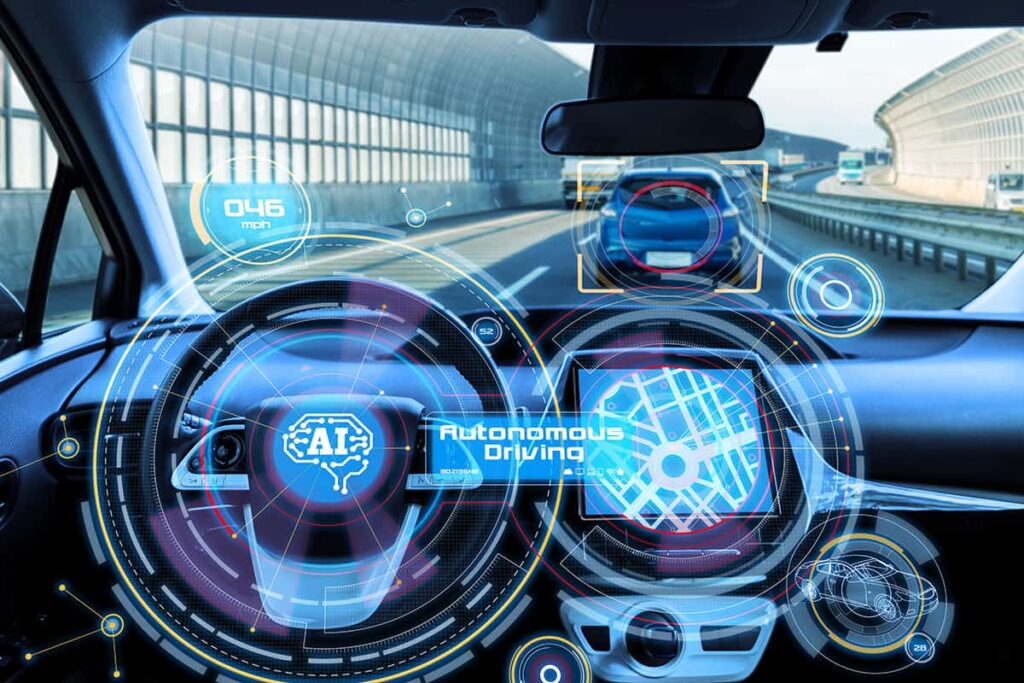In order to understand what AI (Artificial Intelligence) is, it is essential to first understand how the real human mind or intelligence works.
Human Intelligence – A Definition
“Human intelligence is a mental quality that consists of the abilities to learn from experience, adapt to new situations, understand and handle abstract concepts, and use knowledge to manipulate one’s environment.” – Britannica

Real or human intelligence encompasses many aspects of the intellectual functions of the human brain; including perception, attention, formation of knowledge, memory, judgment, evaluation, reasoning, problem-solving, decision making, comprehension, language production, levels of motivation, and self-awareness.
Prof. Earl Hunt of the University of Washington, in his book Human Intelligence, discusses the conceptual status of intelligence as a collection of cognitive skills that include, but also go beyond, those skills evaluated by conventional tests; intelligence tests, and their analysis.
Contemporary theories of intelligence; biological and social causes of intelligence; the importance of intelligence in social, industrial, and educational spheres; the role of intelligence in determining success in life, both inside and outside educational settings; and the nature and causes of variations in intelligence across age, gender, and racial and ethnic groups.
Artificial Intelligence-the Term
In 1956, less than a century ago human beings in their quest to understand their own intelligence reached to develop intelligent robots and artificial beings. The term artificial intelligence (AI) was coined at a conference to better understand and develop ideas about thinking machines.
Artificial Intelligence
Artificial Intelligence is the branch of computer science that attempts to create computers that think like humans. The biggest flaw in just defining AI as “building machines that are intelligent” is that it fails to describe what AI is.
What distinguishes a machine as intelligent? Although AI is a multidisciplinary discipline with many methodologies, advances in machine learning models and deep learning are causing a paradigm shift in nearly every sector of the IT industry.
Artificial Intelligence A Modern Approach
Stuart Russell and Peter Norvig approach the subject by uniting their work around the theme of intelligent agents in machines in their pioneering textbook AI: A Modern Approach.
AI is defined as “the study of agents that receive percepts from the environment and perform actions,” According to this definition. Russell Norvig Norvig and Russell then go on to look at four main approaches to AI that have shaped the discipline in the past:
- Thinking humanly
- Thinking rationally
- Acting humanly
- Acting rationally
The first two concepts are about thinking and thought processes, whereas the rest are about conduct. “All the skills needed for the Turing Test also allow an agent to operate rationally,” Norvig and Russell write, focusing on rational agents that act to get the best outcome. (Russel and Norvig 4, for example.)
Embodied agent
A robot which moves and acts much like a human is an embodied agent. An embodied agent, also known as an interface agent in artificial intelligence, is an intelligent agent that interacts with the environment through a physical existence within surroundings. Agents that are graphically represented with a body, such as a human or a cartoon animal, are also referred to as embodied agents.
Neural Network
Artificial intelligence systems that attempt to imitate the way a human brain works are called neural networks. Neural networks framework the human brain’s behaviour, allowing computer programmes to recognise patterns and solve common problems in the fields of artificial intelligence, machine learning, and deep learning. The initial goal of the neural network approach was to develop a computational system capable of solving problems in the same way that the human brain does.
However, as time passed, researchers shifted their focus to using neural networks to match specific tasks, resulting in deviations from a strictly biological approach.
Why is AI gaining importance currently?
The following are the various reasons why AI is gaining importance in every field of technology.
Machine Learning
Machine learning is a sort of artificial intelligence (AI) that “learns” or adapts over time. This technology recognizes input patterns and comprises algorithms that evolve over time, rather than following static rules specified in a program. ML offers a wide range of applications, many of which have become commonplace in recent years. Here are several examples of machine learning:
Diagnoses in medicine

Machine learning is a promising way to avoid misdiagnosis which results in complications and death. The top 5 applications of machine learning technology for medical diagnosis are listed below:
Oncology:
The relevance of finding a malignant tumour early in oncology is critical. This is why, in this discipline, diagnostic accuracy and precision are critical.Oncologists can use machine learning to detect cancer in its early stages. Medical experts can quickly detect somatic mutations using techniques like DeepGene (a somatic mutation is an acquired change in a genetic code of one or more cells). Artificial intelligence can identify mutation markers more quickly and accurately than humans.
Pathology:
Given the global lack of pathologists, there is a strong case to be made for using machine learning to advance in this discipline. Pathology is also incredibly profitable for artificial intelligence applications due to the necessity for data analysis of massive datasets.
Here are some of the most promising applications of machine learning in medical diagnosis:
- Using automated tissue and cell quantification to improve the precision of blood and culture analysis.
- On a medical slide, mapping disease cells and highlighting regions of interest.
- The development of tumour staging paradigms.
- Increasing the speed of profile scanning to improve the efficiency of healthcare workers.
Dermatology:
Artificial intelligence is utilized in dermatology to improve clinical decision-making and ensure that skin condition diagnoses are accurate. Physicians anticipate that the use of machine learning in this discipline will reduce the number of needless biopsies that dermatologists must perform on their patients.
In Dermatology, there are numerous functional machine learning applications, including:
- An algorithm that can distinguish melanomas from benign skin lesions with more accuracy than a human.
- Tools that track the growth and changes of skin moles, allowing for early detection of serious disorders.
- Algorithms help identify biomarkers for acne, nail fungus, and seborrheic dermatitis.
Genetics and genomics
Although Project is the poster child for healthcare and technology collaborating for potentially groundbreaking research, it is not the only approach to employ machine learning in medical diagnosis.
Machine learning and artificial intelligence (AI) are important components of preventive genetics. The use of algorithms is on the rise by scientists to figure out how medications, chemicals, and environmental variables affect human DNA.
Last but not least, geneticists seek to increase the efficiency of gene editing, which involves modifying DNA pieces to protect or reverse the effects of a mutation in a fetus.
Its use in genetics is restricted to the treatment of terminal diseases because the scientific community has frequently highlighted ethical concerns about gene editing. Currently, gene editing experts are concentrating their efforts on Cystic Fibrosis and Huffington Disease.
Mental health
Mental health illnesses are one of the most expensive conditions to treat in the United States, according to statistics. According to studies, one out of every five adults in the United States suffers from a mental illness. The consequences of keeping these disorders untreated or misdiagnosed are disastrous: decreased productivity, higher healthcare costs, and reduced overall quality of life.
Through machine learning, artificial intelligence can have a revolutionary impact on mental health research and the efficiency of medical diagnostics.
Vehicles That Drive Themselves

Self-driving cars are ones that can sense their surroundings and operate without the need for human intervention. At no point is a human passenger required to assume control of the car, nor is a human passenger required to be present in the vehicle at all. Self-driving cars can go anywhere a traditional car can go and accomplish everything a skilled human driver can do.
The Society of Automotive Engineers (SAE) has defined six stages of driving automation, ranging from entirely manual to fully automated (fully autonomous). The US Department of Transportation has approved these standards.
Google AdSense and Facebook Advertising are two examples of online ad targeting.
Google Assistant, Amazon Alexa, Microsoft Cortana, and Apple Siri all have speech recognition capabilities.
Face recognition on Facebook and in Apple Photos are machine learning examples of picture recognition.
Natural Language Processing (NLP)
Natural language processing is a subfield of linguistics, computer science, and artificial intelligence concerned with the interactions between computers and human language, in particular how to program computers to process and analyze large amounts of natural language data. The goal is a computer capable of “understanding” the contents of documents, including the contextual nuances of the language within them. The technology can then accurately extract information and insights contained in the documents as well as categorize and organize the documents themselves.
The Four Types of AI Systems
1. Reactive Machines
A reactive machine cannot depend on previous experiences to guide real-time decision-making because it lacks memory. It is guided by the most fundamental AI principles (as the name suggests) and it is solely capable of perceiving and reacting to the world around it. ItReactive machines perceive the world directly, hence, they are designed to do only a restricted number of specialized tasks.
However, intentionally confining a reactive machine’s viewpoint isn’t a cost-cutting tactic; instead, it means that these types of AI systems will be more trustworthy and reliable — they will respond to stimuli, in the same way, every time. Deep Blue, an IBM chess-playing supercomputer that defeated international expertGary Kasparov in a game in the 1990s is a renowned example of an AI technology reactive machine.
Deep Blue could only recognize the pieces on a chessboard and know how they move based on the rules of chess, as well as recognize each piece’s current position and choose the most logical move at the time. The machine was not looking for future potential plays from its opponent or attempting to better place its own pieces. Every turn was treated as though it were its own world, distinct from any previous action.
Google’s AlphaGo is another example of a game-playing reactive machine AI technology. AlphaGo is also unable to predict future plans, instead of relying on its own neural network to assess current game developments, giving it an advantage over Deep Blue in a more complex game. AlphaGo has also defeated world-class Go players, including Lee Sedol, the 2016 Go champion.
Reactive machine AI systems despite their limited scope and inability to be easily updated when designed to accomplish recurring tasks can achieve a level of complexity and reliability.
2. Limited Memory
When gathering information and assessing prospective options, AI with limited memory can store previous data and predictions, essentially peering into the past for indications on what might happen tomorrow.
AI with limited memory is more complicated and has more possibilities than reactive machines. Limited memory AI is created when a team regularly teaches a model on how to analyse and use fresh data, or when an AI ecosystem is developed such that models may be automatically taught and updated.
Following steps must be followed when using restricted memory AI in machine learning:
- The machine learning model must be constructed,
- the model must be able to generate predictions,
- the machine learning model must be able to receive human or environmental feedback,
- that feedback must be saved as data,
- All these stages must be repeated in a cycle.
There are three major machine learning methods that use AI with limited memory:
- Reinforcement learning is the form of machine learning which, after a lot of trial and error, learns to make better predictions.
- Long Short Term Memory (LSTM), is a form of machine learning which makes use of previous data to forecast the next item in a sequence when making predictions, moreover, LTSM prioritizes more recent information and devalues data from the past, yet they still use it to draw inferences.
- Evolutionary Generative Adversarial Networks (E-GAN), this form of machine learning evolves, allowing it to explore slightly modified courses depending on previous experiences. Throughout its evolutionary mutation cycle, this machine learning model is always looking for a better path and uses simulations and statistics, or chance, to anticipate outcomes.
3. Theory of Mind
Theory of Mind is exactly that: a theory. We haven’t yet developed the technology and scientific capabilities required to advance AI to the next level.
In psychology, other living beings have thoughts and feelings that influence one’s actions. This would mean that AI computers might understand how people, animals, and other machines feel and make decisions through self-reflection and determination, and then use that information to make their own conclusions.
In order to create a two-way relationship between people and AI, computers would need to be able to grasp and interpret the idea of “mind,” the fluctuations of emotions in decision making, and a slew of other psychological concepts in real-time.
4. Self Awareness
The ultimate stage for AI to become self-aware will be to build a Theory of Mind in AI, which will happen sometime in the future. This type of AI is conscious on a human level and is aware of its own presence in the world as well as the presence and emotional condition of others. It would be able to deduce what others may require based on not just what they say to them, but also how they say it.
Self-awareness in AI requires human researchers to understand consciousness and then replicate it in machines.
How is AI Used?
Jeremy Achin, CEO of DataRobot, opened his keynote at the Japan AI Experience in 2017 by giving the following characterization of how AI is used today:
“Artificial intelligence (AI) is a field of computer science that deals with computer systems that can do tasks that would normally need human intelligence… Many of these artificial intelligence systems are based on machine learning, while others are based on deep learning and yet others are based on mundane things like rules.”
When it comes to artificial intelligence, there are two types:
- Narrow AI
- Artificial General Intelligence.
1. Narrow AI
This type of artificial intelligence, often known as “weak AI,” operates in a constrained context and is an imitation of human intelligence. While narrow AI is mostly focused on properly executing a specific task, these machines operate under many more constraints and limits than even the most basic human intelligence.
2. Artificial General Intelligence (AGI)/Interesting facts about Ai
Strong AI or Artificial General Intelligence is the type of AI we see in movies like Westworld’s machines or Star Trek: The Next Generation’s Data. AGI is a machine that has general intelligence and can use that intelligence to solve any problem, much like a person can.
Narrow Artificial Intelligence
Narrow AI is everywhere, and it is by far the most effective AI deployment yet.
According to the Obama Administration’s 2016 study “Preparing for the Future of Artificial Intelligence,” narrow AI has made significant advances in the last decade; resulting in “substantial societal benefits and contributing to the nation’s economic vibrancy.” Here are a few examples of Narrow AI in action:
- Conduct a Google search
- Image recognition software.
- Personal assistants like Siri and Alexa, as well as others
- Self-driving cars
- Watson, an IBM product
- Machine Learning & Deep Learning
In order to build narrow AI, machine learning and deep learning have advanced significantly. In addition, the distinctions between artificial intelligence, machine learning, and deep learning may be difficult to discern.”Ar,” says Frank Chen, a venture capitalist, while explaining how to tell them apart. “Artificial intelligence (AI) is a set of algorithms and intelligence that tries to mimic human intelligence. Deep learning is one of the techniques which is used in machine learning.
Machine learning, in its most basic form, feeds data to a computer and uses statistical approaches to help it “learn”.
Computers with ai use human intelligence to make decisions. Computer vision is a field of computer science that deals with emulating some parts of human vision systems; enabling computers to identify, in a way similar to humans; objects in images and videos.
With advancements in deep learning and neural networks, the field has made significant strides in recent years, surpassing humans in tasks relating to object detection and classification. To distinguish between typed and handwritten text, computer vision research began in the 1950s and continued into the 1970s. Today, computer vision applications have evolved tremendously.
Advance AI Use Cases and Applications:
Artificial Intelligence VS Business Intelligence
I have tried to gather the most common use cases in the field of marketing, sales and customer services.AI disrupts every industry and business function like marketing, sales, HR, customer service, finance and operations. Moreover, in 2018, Google Trends reported that 37% of organizations wanted to define their strategies. In 2021 percentage of organizations using AI technology has soared to 85%, according to the O’Reilly survey.
1. Marketing
According to a poll of worldwide marketers done in 2024, 41% of respondents noticed an improvement; in revenue growth and enhanced performance as a result of using AI; in their marketing initiatives.
Marketing is majorly about making the right offer, with the right message, at the right time; through the right channel, and to the right customer; while continuing to learn.
Companies to achieve success may use AI-powered tools to better understand their customers, develop more attractive content, and run targeted marketing campaigns. With customer data, AI can deliver precise insights and suggest clever marketing strategies; that can immediately impact revenues. The following are the top three AI applications in marketing:
1a. Marketing analytics
Use marketing activities to teach, analyze, and measure AI systems. These tools monitor media coverage and provide insights into public relations initiatives, highlighting what drives engagement, traffic, and income. As a result, businesses can give their clients better and more precise marketing services.
Aside from public relations initiatives, AI-powered marketing analytics can help businesses better identify their target audiences.
Moreover, companies may establish appropriate marketing plans and retarget customers who have previously expressed interest in products or services by locating their loyal customers.
1b. Personalized Marketing
The better a business understands its clients, the better it can serve them. Companies may use AI to help them with this work and provide personalized experiences for their customers.
Consider the case when you went to an online store; and looked at a product, but did not purchase it. After that, you see the same goods advertised in digital ads. Furthermore, businesses can send tailored emails or special offers to customers; as well as promote new goods that match their preferences.
1c. Context-Aware Marketing
To help you understand advert Context-aware marketing presented this technology use machine vision and Natural Language Processing. With context-aware advertising, you can protect your brand and increase marketing efficiency by ensuring that your message fits its environment.
2. Sales
2a. Sales Forecasting
Based on all client contacts and prior sales outcomes, AI also provides for automatic and accurate sales forecasting. Also, it forecast sales properly and automatically based on all client connections and prior sales outcomes. Increase prediction accuracy while giving your salespeople more time to sell.
2b. Sales Data Input Automation
CRM allow data from a different source to copy with ease. Moreover, it will sync your salesforce’s calendar, address book, emails, phone calls, and messages to your CRM system automatically. Profit from improved sales visibility and analytics while giving your salespeople more time to sell.
2c. Predictive sales/lead scoring
Artificial Intelligence can enable predictive sales to score leads and help sales reps prioritize their actions; based on lead ratings and contact characteristics. And, since systems have granular access to lead scores and the sales rep performance.
Moreover, these systems use anonymized transaction data from its clients; as well as the sales data for this specific customer to score leads. These systems use anonymized data to measure contact factors and analyze all customer contacts; such as emails and phone conversations.


